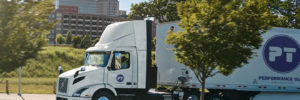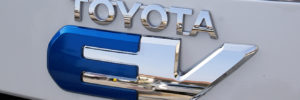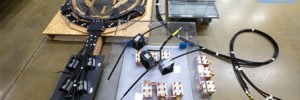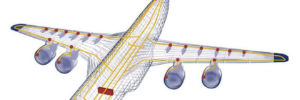Next month possibly will be a new all-time monthly record.
Source: Electric Vehicle News
EGEB: Researchers ran tests on wind turbine noise and got a surprise
In today’s Electrek Green Energy Brief (EGEB):
- A technique used to improve wind farms’ performance makes them quieter, too.
- The leading source of energy in Brazil in 2020 is hydropower, but solar is the rising star.
- UnderstandSolar is a free service that links you to top-rated solar installers in your region for personalized solar estimates. Tesla now offers price matching, so it’s important to shop for the best quotes. Click here to learn more and get your quotes. — *ad.
The post EGEB: Researchers ran tests on wind turbine noise and got a surprise appeared first on Electrek.
Source: Charge Forward
Performance Team orders 16 Volvo VNR Electric Class 8 trucks
Warehousing and distribution company Performance Team (a Maersk company) has placed an order for 16 Volvo VNR Electric Class 8 trucks—the largest order for the model to date. The Volvo VNR Electric is designed for local and regional freight distribution, and the new e-trucks will go into service carrying regional loads to customers across Southern California.
Volvo Trucks North America began taking customer orders for its VNR Electric model in December 2020. Production began in Q2 2021 at the company’s New River Valley manufacturing plant in Dublin, Virginia.
Performance Team took advantage of a South Coast Air Quality Management District grant to replace some of its diesel trucks with EVs, and to install charging infrastructure.
“We’re seeing a 30% growth rate in our warehousing and distribution business,” said Performance Team Executive VP Jason Walker. “Customers are looking for more truck power to meet high-volume delivery demands. This new order of Volvo VNR Electric trucks will give us firsthand experience on their performance carrying regional loads and environmental benefits. Our findings will help determine next steps in our fleet modernization and the electric infrastructure necessary for future operations.”
Source: Volvo Trucks
Source: Electric Vehicles Magazine
Toyota actively lobbies against support for EVs
Toyota has earned a place in the history of transport electrification. The Japanese automaker’s introduction of the Prius hybrid in 1997 was a milestone. Since then, the company has sold some 15 million hybrids worldwide, and has gradually added hybrid powertrains to more of its offerings—a majority of Toyota and Lexus models are now available in hybrid versions.
Toyota was also an early pioneer of fuel cell vehicles, and it has stubbornly stuck with this technology, although most experts now agree that it isn’t suitable for passenger cars, and most other automakers (including Daimler, Honda, GM and Volkswagen) have abandoned it. (As detailed in my history of Tesla, Martin Eberhard and Marc Tarpenning investigated hydrogen fuel cells in detail before deciding to focus on battery-electric powertrains).
Toyota has been an electrification innovator on several levels—in addition to its leadership in the hybrid and fuel cell fields, it produced an electric RAV4, with battery packs from Tesla, for a short time. Furthermore, the company recently launched three new electric models, although so far, these are only for sale in China.
Considering Toyota’s history, and its undisputed technological mastery, it’s very puzzling that the automaker has become the industry’s strongest voice opposing the transition to electric vehicles. In January, CEO Akio Toyoda made the company’s position clear with an anti-EV tirade in which he denounced the Japanese government’s recent proposal to phase out fossil-fuel vehicles.
Back-room deals to sabotage e-mobility
As followers of the EV media know, battery-bashing has been Toyota’s public policy for several years now. However, many may not be aware that the company is also waging a behind-the-scenes political push around the world to slow down the transition to EVs.
The New York Times reports that Chris Reynolds, a Toyota senior executive, recently traveled to Washington for closed-door meetings with congressional staff members, in which he emphasized his company’s opposition to the Biden administration’s proposed measures to promote EVs, arguing that hybrids and hydrogen vehicles should play a bigger role in the transition.
Toyota’s lobbying effort in Washington is part of a worldwide strategy of opposing stricter emissions standards and EV mandates. Executives at Toyota’s Indian subsidiary publicly criticized India’s target for 100 percent EVs by 2030. The company sued the Mexican government over fuel efficiency rules. In Japan, Toyota officials argued against carbon taxes.
“Toyota has gone from a leading position to an industry laggard” in clean-car policy, Danny Magill, an analyst at InfluenceMap, a think tank that tracks corporate climate lobbying, told the Times. InfluenceMap gives Toyota a D- grade, the worst of any automaker, because of its efforts to undermine public climate goals.
Despite the messages from its CEO and its advertising, Toyota spokesman Eric Booth told the Times that the company is not opposed to EVs. “We agree and embrace the fact that all-electric vehicles are the future, [but] too little attention is being paid to what happens between today, when 98 percent of the cars and trucks sold are powered at least in part by gasoline, and that fully electrified future,” he said. Toyota also says that efficiency standards should “be informed by what technology can realistically deliver and help keep vehicles affordable.”
This echoes the “let’s wait a while” argument often heard from advocates for the fossil fuel and nuclear industries and, sadly, from some who acknowledge the need to address climate change, but who believe that research into future “miracle technologies” should take precedence over action in the here and now. What’s worse, an analysis of Toyota’s political donations shows that the company supports politicians with radical anti-environmental (and anti-democratic) views. The nonprofit watchdog Citizens for Responsibility and Ethics in Washington (CREW) tallied campaign contributions and found that Toyota was one ofthe largest corporate donors this year to Republicans in Congress who disputed the 2020 presidential election result. The Times reports that at least 22 of those lawmakers have denied the scientific consensus on human-caused climate change.
Once the story broke in the media, Toyota announced that it would stop donations to members of the “Sedition Caucus.” However, it remains to be seen whether the company will follow the usual corporate playbook, and quietly resume its contributions once the story fades from the headlines. “Several of [the corporate contributors identified] initially committed to ceasing contributions to members who voted not to certify the election results, before deciding to start giving again,” CREW reports.
Many auto industry experts are puzzled and dismayed by Toyota’s anti-EV lobbying push in Washington, which is a fairly recent development. “They really were on the right path, especially with the introduction of the Prius, and they still talk about climate change,” former EPA exec Margo Oge told the Times. “But they’re fighting policies for electric vehicles across the globe, and that’s hurting the effort of policymakers in setting any ambitious measures.”
A fuel cell fiasco
Even as Toyota (along with various oil industry-backed groups) lobbies global governments to enact hydrogen-friendly policies, a high-profile project that was meant to serve as a showcase for Toyota’s fuel cell vehicles may have turned out to be an environmental and financial fiasco.
Toyota supplied a fleet of hydrogen-powered buses, and several Mirai fuel cell cars, for the Tokyo Olympics and Paralympics. The climate benefits of fuel cells are predicated on the future availability of green hydrogen, which is made by electrolysis using renewable energy sources. However, CleanTechnica reports that the hydrogen used to power the Olympic buses, like almost all the hydrogen produced today, is grey hydrogen, made from natural gas. “The supposedly clean hydrogen available in Japan is made primarily from natural gas at existing chemical plants using a process that emits copious amounts of carbon dioxide,” writes Steve Hanley. Furthermore, “the country’s plans for a future supply of hydrogen amounts to importing large amounts of it from Australia, where it will be made from coal using carbon capture technology that does not exist.”
Toyota’s fuel cell buses fail on the financial front as well. The Financial Times reports that each one cost $900,000 for a 6-year lease, whereas a comparable diesel-powered bus with a typical service life of 15 years can be had for $220,000. Federal and local government subsidies covered 80% of the lease cost, but even that was not enough to make them competitive. “The fuel costs are also higher,” Daisuke Harayama, chief of operations at Tokyu Bus, a private company that introduced two of the fuel cell buses, told the FT. “The fuel cost is 2.6 times higher for [fuel cell vehicles] over diesel.”
The Financial Times concludes: “For now, the environmental benefit of the buses that will ship Olympic athletes and officials around the city is hypothetical.”
This article originally appeared in the EVannex blog. Author: Charles Morris. Sources: New York Times, CleanTechnica, Financial Times
Source: Electric Vehicles Magazine
Tesla (TSLA) produces record number of EVs at Gigafactory Shanghai, mostly exports
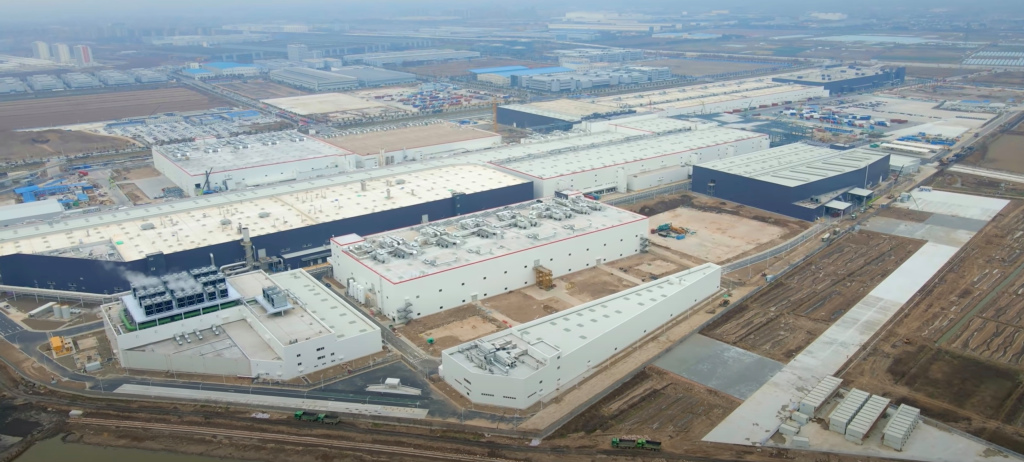
Tesla produced a record number of electric vehicles out of Gigafactory Shanghai last month.
Interestingly, they were again mostly for exportation outside of China.
The post Tesla (TSLA) produces record number of EVs at Gigafactory Shanghai, mostly exports appeared first on Electrek.
Source: Charge Forward
HEVO to commercialize ORNL’s dynamic wireless charging technology
The DOE’s Oak Ridge National Laboratory has licensed its wireless charging technology to Brooklyn-based HEVO. The system is designed to provide high power levels in a small package, and also supports dynamic charging, which could one day allow EVs to be charged while in motion.
HEVO will work with ORNL to further develop the technology and make it ready for commercial manufacturing. Supported by a DOE Technology Commercialization Fund award, HEVO and ORNL will co-develop and demonstrate a 300 kW wireless charging system based on the ORNL converter and associated power electronics.
The license covers ORNL’s polyphase electromagnetic coil, which delivers a surface power density of 1.5 megawatts per square meter—eight to 10 times higher than currently available technology, according to ORNL. This allows high power levels to be delivered by a thinner, lighter coil, addressing the issue of adding range-sapping extra weight to EVs.
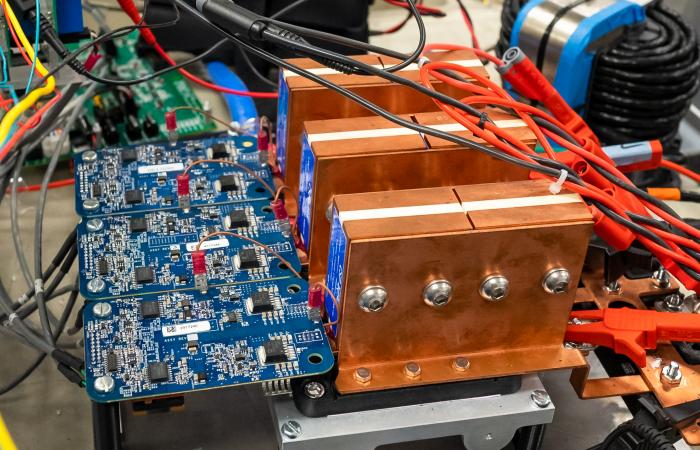
The license also includes ORNL’s Oak Ridge Converter, which directly converts 60 Hz AC power from the grid to high-frequency AC without making an intermediate conversion to DC power. ORNL says its converter design can reduce the weight and size of stationary, grid-side infrastructure by as much as 50%.
The dynamic charging system also supports electric heavy-duty trucks. “Right now, those big trucks would require massive battery packs that add significant weight and cost to the vehicle,” said Veda Galigekere, who leads ORNL’s Electric Drives Research Group. “But with dynamic wireless charging on interstates, for instance, you can reduce the onboard battery capacity needed while alleviating range anxiety.”
“Together, we are developing the fastest and most universal wireless charging platform in the world,” said HEVO founder and CEO Jeremy McCool. “From only one device mounted on the vehicle, a driver will now have the advantage of wirelessly charging at all levels up to 300 kilowatts, powering their home through a vehicle-to-grid interface, and even charging while driving at highway speeds with grid-to-battery efficiency of 90-96.5%. [The system also has] the capability to charge electric vehicles without a human behind the steering wheel. All of this functionality is built into a vehicle-side package the size of a medium pizza box.”
Source: Oak Ridge National Laboratory
Source: Electric Vehicles Magazine
Challenges in testing electric aircraft motors and inverters
In recent years there has been an increased interest in electric and more electric aircraft, including both novel all-electric aircraft, drones, rigid air ships and traditional aircraft with efficient and more electric components. Validating these systems and components has challenges due to the nature of aerospace testing as well as the high level of sophistication of the systems. Aerospace testing requires rigorous reliability testing and validation on all electrical and mechanical systems before planes and components can fly. Many of the technologies that enable the high level of reliability also create technical challenges in both design and measurement. The use of many motors or higher phase count motors will create a higher level of complexity than in land applications.
This paper will expand on some of the challenges seen in electric aircraft testing and how HBK’s eDrive system helps overcome these challenges which includes test stand setup, high complexity testing, measurement of high frequency power, electromechanical testing and high voltage testing.
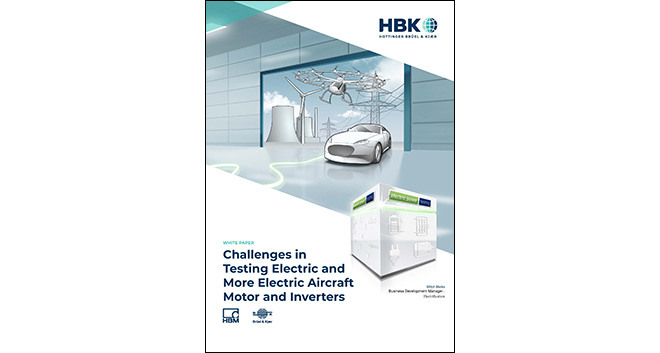
Source: Electric Vehicles Magazine
Best Used PHEVs Under $20,000
With the inflated used car prices, used PHEVs are increasingly becoming more expensive. However, there are still plenty of options.
Source: Electric Vehicle News
Porsche Is Overwhelmed By 'Huge' Taycan Demand
Order backlog extends to half a year.
Source: Electric Vehicle News
Three of the five US states with the most EVs didn't have a mandate for them
 Zero-emission vehicle mandates have been an important tool for spurring EV sales, but some states have managed to do pretty well without them, according to new government data. In fact, three of the five U.S. states with the most EV registrations don’t currently have mandates in place requiring the sale of zero-emission vehicles by the…
Zero-emission vehicle mandates have been an important tool for spurring EV sales, but some states have managed to do pretty well without them, according to new government data. In fact, three of the five U.S. states with the most EV registrations don’t currently have mandates in place requiring the sale of zero-emission vehicles by the…
Source: Hybrid and Electric Car News and Reviews

